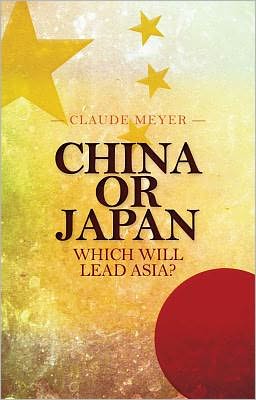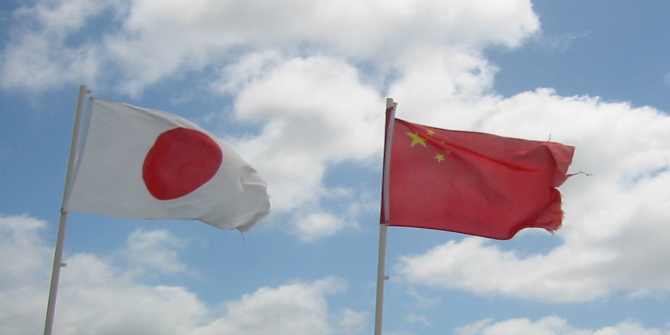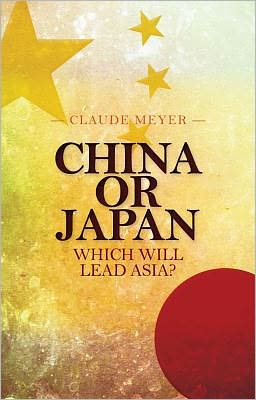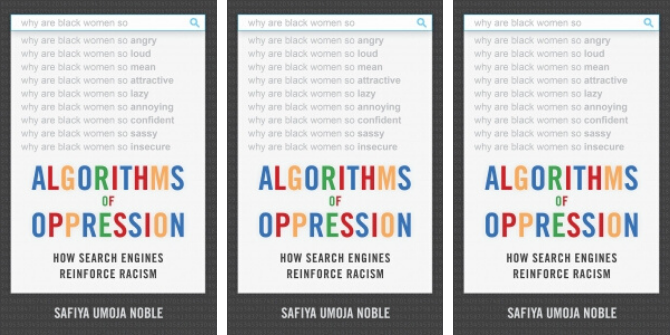China or Japan: Which Will Lead Asia? is a stimulating book aims to open a debate on the question of leadership in Asia for which China and Japan are competing. Claude Meyer assesses the two rivals’ strengths and weaknesses as well as the major challenges which they will face in that battle for supremacy. Luke McDonagh is impressed by this book’s balance and historical insight, and recommends the book for those interested in the economic future of the region.
This book review has been translated into Mandarin by Sam HO (Mandarin LN240, teacher Lijing Shi) as part of the LSE Reviews in Translation project, a collaboration between LSE Language Centre and LSE Review of Books. Please scroll down to read the translation or click here.

This book poses a significant and timely question – ‘Who will lead Asia?’. In light of China’s extraordinary economic growth over the last decade, and Japan’s relative stagnation, many would say that the answer is obvious – China. This view, however, may prove to be mistaken in the coming decades since it overlooks some of Japan’s comparative advantages over its larger rival. Over the course of this book Claude Meyer does an excellent job of highlighting Japan’s strengths and weaknesses, while also examining the case for and against China becoming the de facto regional power.
The first chapter examines the economic trajectory of both countries during the past 50-60 years. For Japan, Meyer details the steady economic growth of the country post-WWII, including its meteoric rise during the 1980s, when it emerged as a genuine economic rival to the United States. Of course, the author also explores Japan’s calamitous fall during the early 1990s and its continuing struggle to re-ignite its sluggish economy – the recent advent of ‘Abenomics‘ is merely the latest attempt at this, and the jury is still out on whether it will prove to be a success in the long term. With respect to China, Meyer discusses the state’s transition from central planning to market socialism, as well as its dramatic entry into the global marketplace and the WTO over the past two decades.
In Chapter Two, Meyer gives an assessment of what makes each state ‘mighty but vulnerable’. One major advantage for Japan is that it is a fully functioning democracy, whereas China remains an authoritarian state. Moreover, unlike Japan, large-scale corruption is a normal daily course of practice in China and there is a corresponding chronic lack of accountability with regard to the functioning of the ruling Chinese Communist Party. Japan is a highly stable and homogenous society; China, on the other hand, is highly diverse, featuring an array of different religious and ethnic groups. Japan is also a highly developed country, with an extremely long life-expectancy and a very high standard of living; much of China’s population by contrast remains mired in abject poverty. Further to this, although Japan suffers from the demographic problem of an aging population, so too does China, largely due to the historical legacy of its one child policy.
 Image Credit: (futureatlas.com CC BY 2.0)
Image Credit: (futureatlas.com CC BY 2.0)
China’s comparative advantages over Japan include its size – it is more than ten times the size of Japan with regard to population, and it covers a much larger land mass. Furthermore, one thing that China currently has in abundance is confidence – something that Japan has lacked since the heady ‘bubble economy’ of the roaring 1980s. One particularly interesting thing that Meyer highlights is the fact that although Japan’s economy has stagnated, it remains the world’s third biggest after the US and China (though the EU is still the largest overall when measured by GDP). In addition, unemployment has remained low in Japan, even during recent decades. With regard to China’s economy, there is no doubt that growth is slowing, and economic history has proven that all rapidly developing economies experience a slump at some point. Some have even suggested that China will inevitably face a major economic crash. On this point, it seems unlikely that the Chinese would weather a sustained slump as well as the Japanese have – the massive inequalities that have arisen over the past three decades of development, coupled with the lack of representative democracy, could well provoke civil unrest, particularly if there is a major spike in unemployment. If this were to happen, the Chinese government may well react, as it did in 1989, with brutal repression.
Indeed, while it cannot be said that democracy is an inevitability in any country, one thing that is inevitable is conflict, which is endemic in all societies. In this regard, democracy has thus far proven to be the best way of mitigating societal conflict ; for instance, there is little doubt Japan is one of the post-WWII democratic success stories. However, many have speculated that China is so ethnically and religiously fragmented that if societal conflicts, such as those arising from the spiralling inequality in the country, come to a head, the state will not be able to democratise peacefully – in this sense, the 2009 clashes between the Uyghurs and the Han ethnic groups in China could be a sign of things to come.
On the other hand, Meyer does not shy away from the fact that Japan faces its own unique challenges. The Japanese state still has work to do when it comes to atonement for WWII-era atrocities which occurred in neighbouring countries, including China. For example, the fact that many controversial WWII-era generals are interred at the war memorial in Tokyo rankles with both China and South Korea, and harms diplomatic relations between the three countries. But it must be remembered that China also has difficulties with its neighbours – part of the reason for Burma and Vietnam’s recent rapprochements with the US is down to their fear of being dominated by China.
In his concluding chapter, Meyer notes that a China-dominated Asia remains a distinct possibility, and that this may indeed occur within the next 20-30 years. As Meyer recounts, China has historically been the world’s biggest economy, and it is only in the last 200 years that it has been displaced by the US; in this sense, China may simply be re-claiming its historic place at the top of the economic tree. Nonetheless, though its strengths are many and wide-ranging, the existence of China’s weaknesses (large-scale corruption, ethnic tensions, lack of democracy) mean that there is a distinct chance that it will not be able dominate the region entirely on its own terms. As Meyer states, this leaves open the possibility that there will in the future be a system of regional co-operation between China and Japan, perhaps also accommodating other Asia powers such as India.
Luke McDonagh is a Fellow in the LSE Department of Law. holds a PhD from Queen Mary, University of London (2011), an LLM from the London School of Economics (2006-7) and a BCL degree from NUI, Galway (2002-05). He has previously taught in the areas of Public Law, Administrative Law and EU Law at Queen Mary as well as Constitutional Law and Tort Law at NUI Galway.
Note: This review gives the views of the author, and not the position of the LSE Review of Books blog, or of the London School of Economics.
书评:《 中国与日本:“谁将领导亚洲》Claude Meyer. Hurst. 2012.
Review translated by Sam HO (Mandarin LN240, teacher Lijing Shi).
 这本书提出了一个重要和适时的问题。鉴于中国过去十年间经济迅速增长以及日本的停滞,不少人会问“谁将领导亚洲?” 显而易见,很多人会回答“ 是中国” 。然而,这个观点在未来几十年或许会被推翻,因为它忽视了日本拥有的相对优势。在这本书中,迈尔(Claude Meyer)毫无保留地勾划出日本的优势和弱点,也同时评估了中国是否拥有亚洲的 “话语权”。
这本书提出了一个重要和适时的问题。鉴于中国过去十年间经济迅速增长以及日本的停滞,不少人会问“谁将领导亚洲?” 显而易见,很多人会回答“ 是中国” 。然而,这个观点在未来几十年或许会被推翻,因为它忽视了日本拥有的相对优势。在这本书中,迈尔(Claude Meyer)毫无保留地勾划出日本的优势和弱点,也同时评估了中国是否拥有亚洲的 “话语权”。
第一章探讨了两国在过去五六十年的经济发展进程。迈尔详细描述了日本在二战后国家经济的稳步增长,其中也包括日本在80年代迅猛的崛起以及日本如何逐渐成为美国的真正经济竞争对手。当然,作者还探讨了日本在90年代初的泡沫经济破灭以及其走出经济长期低迷困局的对策。“安倍经济学”仅仅是其最近一次的尝试,而经济学家对它的长远成效仍然持着观望的态度。在中国方面,迈尔讨论了中国从计划经济蜕变成社会主义市场经济的过程,以及它在过往二十年间戏剧性地参与全球市场和加入世贸组织的进程。
在第二章中,迈尔评估了这两个国家 “外强中干”的因素。日本的主要优势是它健全的民主体制,而中国仍然是一个权威政体。此外,与日本不同的是大规模贪污在中国社会上是屡见不鲜的,中国共产党在政策制定与执行上长期不透明。再者,日本是一个非常稳定和单一民族的社会 ; 相反,中国社会是高度多样化的,并由一系列不同的宗教和种族群体所组成。 日本是一个高度发达,并且具有极长人均寿命和高素质生活水平的国家。相比之下,中国的多数人口仍然处于赤贫状态。 虽然日本受到人口老化的问题困扰,但中国的情况也不相上下,主要是由于 “独生子女政策”的负面历史原因。
 Image Credit: (futureatlas.com CC BY 2.0)
Image Credit: (futureatlas.com CC BY 2.0)
中国幅员辽阔人口众多,此乃是中国相对于日本之优势,中国人口是日本的十倍以上,而且陆地面积比日本更广阔。此外,中国目前自信满满 ,这是自1980年“泡沫经济” 后一直萎靡不振的日本所缺乏的。迈耶强调了一个特别有趣的事实:虽然日本的经济停滞不前,但它仍然是自美国和中国之后的世界第三大经济体(尽管如果以GDP来衡量,欧盟仍然是最大的经济体)。此外,在最近几十年来,日本的失业率仍然很低。毋庸置疑,中国的经济增长正在放缓,而经济历史亦证明了所有急速发展的经济体必然会在某时间点上遇到挫折。有人甚至提出中国不可避免会面临重大经济衰退的可能性。就这一点而言,中国的经济似乎不太可能像日本的一样持续低迷。中国在过去三十年间的发展中产生了严重的财富悬殊问题,而且中国也缺乏代议制民主的制度,一旦失业率大幅上升,便可能引起内部动荡。倘若这种情况发生,中国政府可能进行残酷的镇压,1989年的悲剧将会重演 。
事实上,虽然不能说民主制度是每个国家的必需品,但社会冲突是每个国家发展的必由之路。在这方面,民主迄今已被证明是减轻社会冲突的良方;例如,日本毫无疑问是二战后民主改革成功案例之一。然而,许多人猜测正因中国在种族和宗教上的撕裂,如不平等所引发的社会冲突达到临界点后,国家将无法实现和平民主化。 在这个意义上看, 2009年中国维吾尔族和汉族之间的冲突可能便是这件事的征兆。
另一方面,迈尔亦没有回避日本所要面对的独特挑战。日本政府仍要为自己在二战时期对邻国(包括中国)所犯下的暴行而负上更大的责任。例如,在处理甲級戰犯的问题上,祭祀用作纪念他们的战争纪念碑,不但激怒了中国和韩国,更损害了三国之间的外交关系。但是必须记住,中国与邻国的关系也出现了问题 – 如最近缅甸和越南与美国关系正常化,某程度上是因为他们害怕被中国控制。
在迈尔的总结章节中,他指出“中国主导亚洲”极有可能会在未来二三十年成为事实。正如迈耶所说,中国在历史上一直是世界上最大的经济体,而且只有在过去200年中,它才被美国所取代;从这个层面上说,中国可能只希望重新夺回它在经济上金字塔顶端的历史地位。虽然中国的优势很多,范围广泛,然而中国目前的弱点(大规模腐败,种族关系紧张,缺乏民主)意味着它将极有可能无法完全自主地控制该地区的话语权。正如迈尔所说,这使得中国和日本之间将有可能形成一个区域性的协调系统,也许还适用于亚洲的其他国家,如印度等。








1 Comments